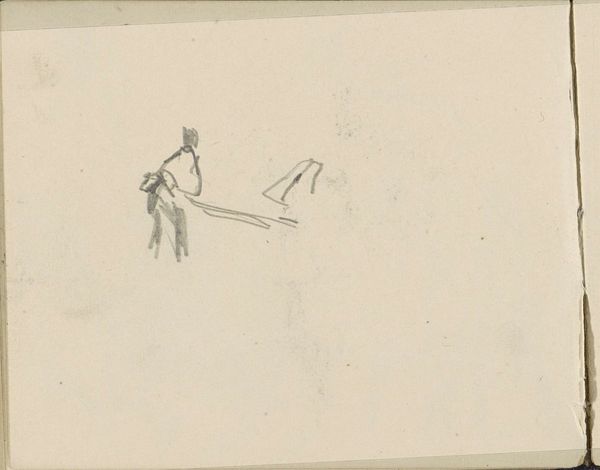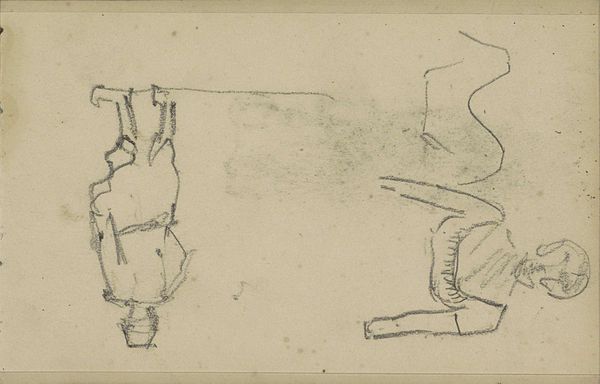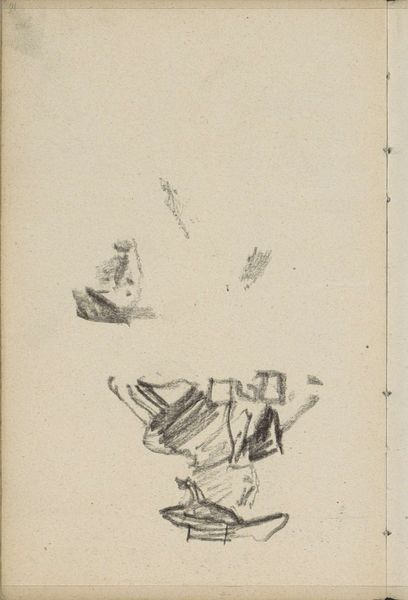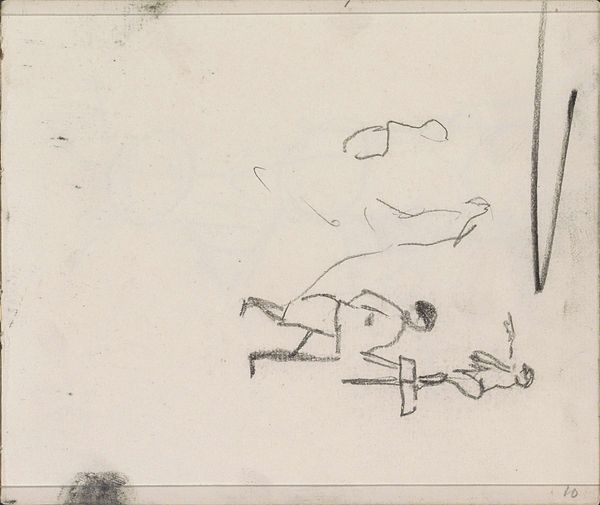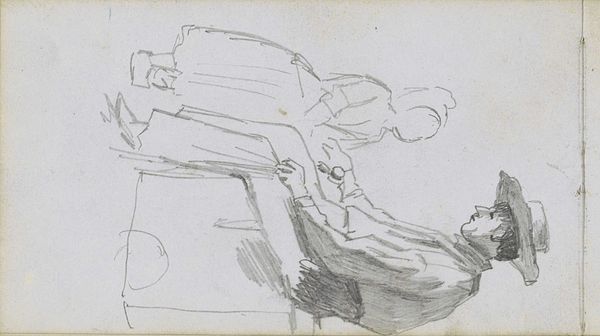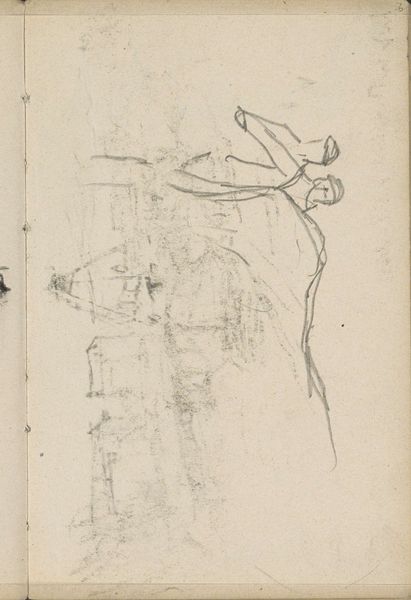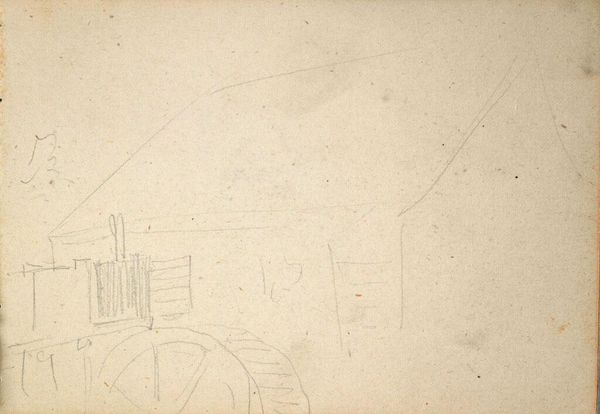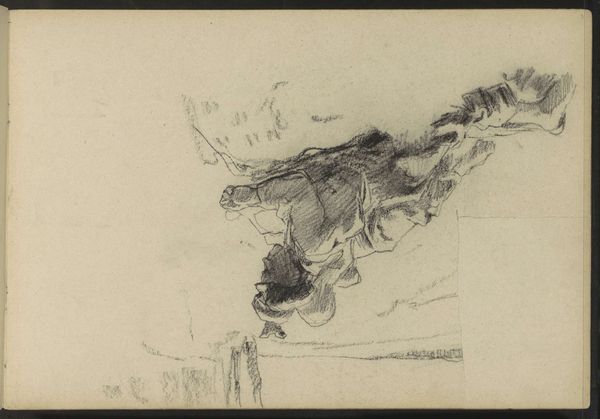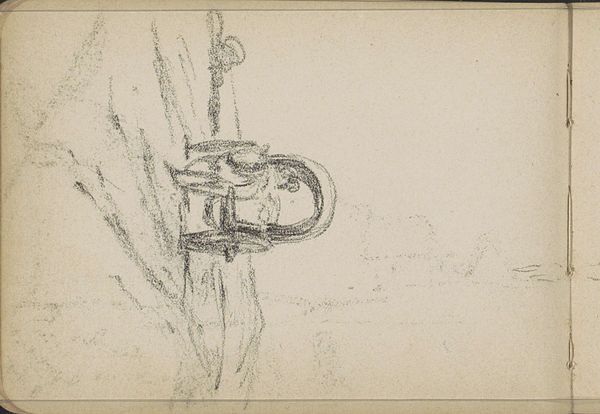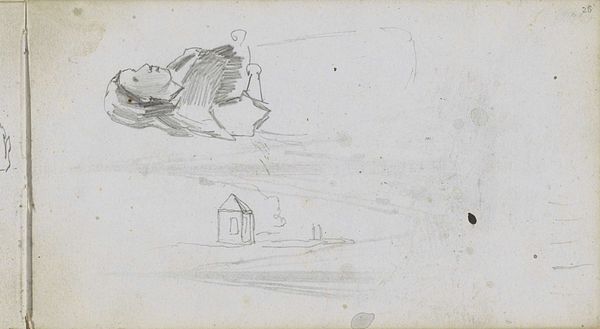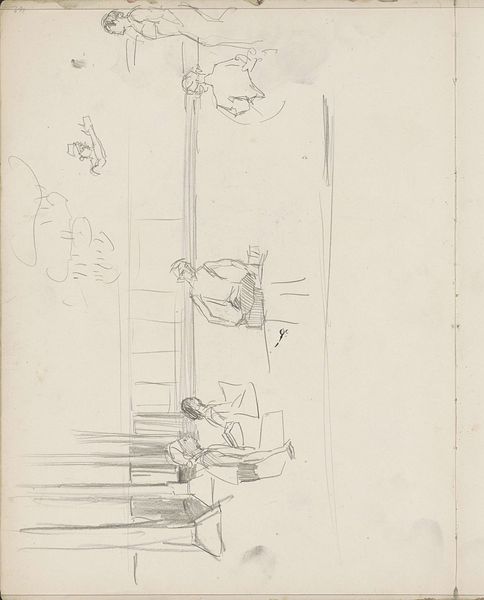
drawing, pencil
portrait
drawing
amateur sketch
light pencil work
pencil sketch
incomplete sketchy
landscape
personal sketchbook
idea generation sketch
ink drawing experimentation
pencil
sketchbook drawing
sketchbook art
realism
initial sketch
Copyright: Rijks Museum: Open Domain
Curator: This small pencil drawing at the Rijksmuseum is titled "Zittende jongen met een pet," or "Sitting Boy with a Cap" by Johan Hendrik Weissenbruch and thought to have been created sometime between 1834 and 1903. What’s your immediate take on this piece? Editor: Well, first, there’s a certain unassuming quality to it, almost humble. It feels like a fleeting observation, caught quickly. I see a boy perched somewhere, perhaps on a fence, and a vague sense of a rural landscape suggested in very light detail. Curator: Exactly! This unassuming nature raises a key question. Given Weissenbruch’s focus on landscape painting and the peasant genre so prominent in the 19th century, where does a drawing like this fit? The loose style defies academic polish, but it's not quite a study in the traditional sense either. It appears that the artist jots his own idea. I think it should be interesting for us to address who had access to training. Editor: Precisely! Because of who was depicted in such portraits and landscapes, considering it was mainly wealthy patrons, we need to address who are being excluded. Here, there's an immediacy that connects to the social conditions. This is something new! It does invite us to imagine the sitter, perhaps a child of the fields, taking a rest. How might his lived experiences intersect with those depictions of rural life popular at the time? Curator: It’s a critical question, and this sketch, while modest, encourages viewers to rethink dominant narratives. Was Weissenbruch trying to bring visibility to a world that was simultaneously romanticized and ignored? Maybe in his sketchbook, he had a bit of freedom. Editor: It certainly adds a layer of complexity. While Weissenbruch may be recognized as a landscape painter, these hints into working-class representation, even unintentionally, remind us that art always exists within the wider frame of society. They are mirrors, or perhaps windows, of the contemporary context. Curator: This seemingly casual sketch invites an exciting entry into larger social, aesthetic, and political issues prevalent at the time. It reminds us of art's enduring power to speak across the ages, in complex ways. Editor: Absolutely, and to consider that even incomplete sketches can offer rich social, personal, and cultural reflections, offering ways to explore our history through diverse perspectives.
Comments
No comments
Be the first to comment and join the conversation on the ultimate creative platform.

